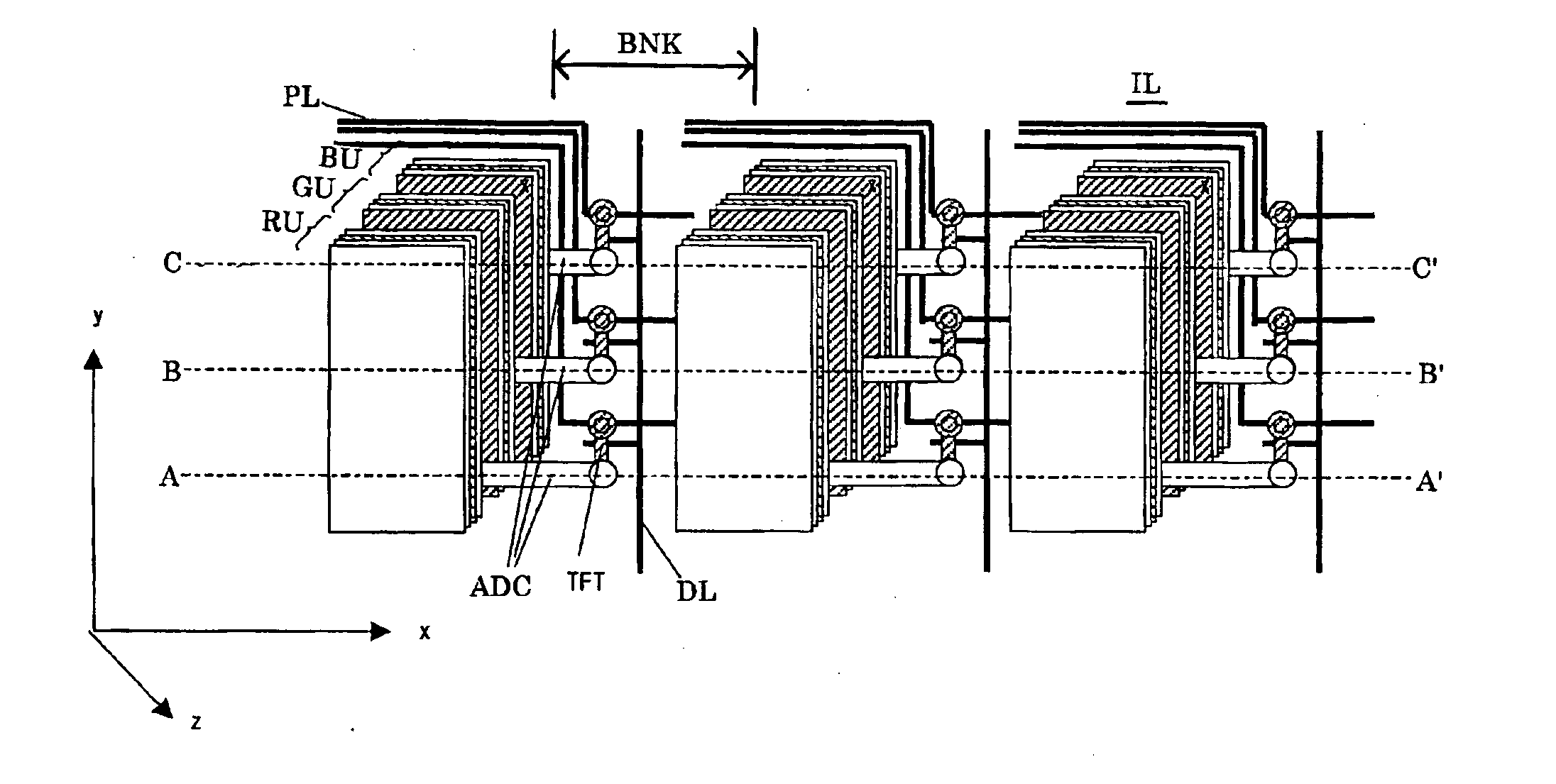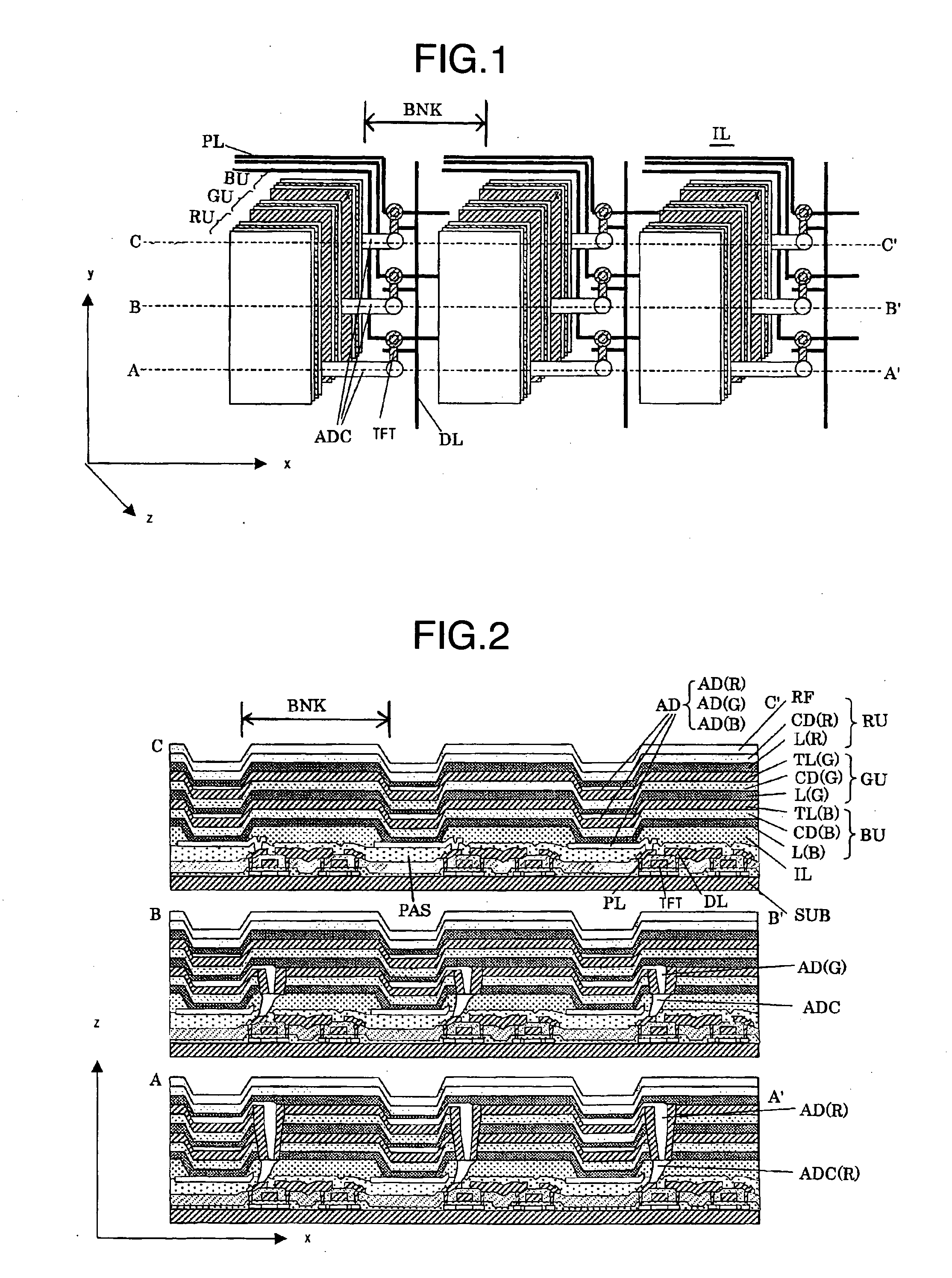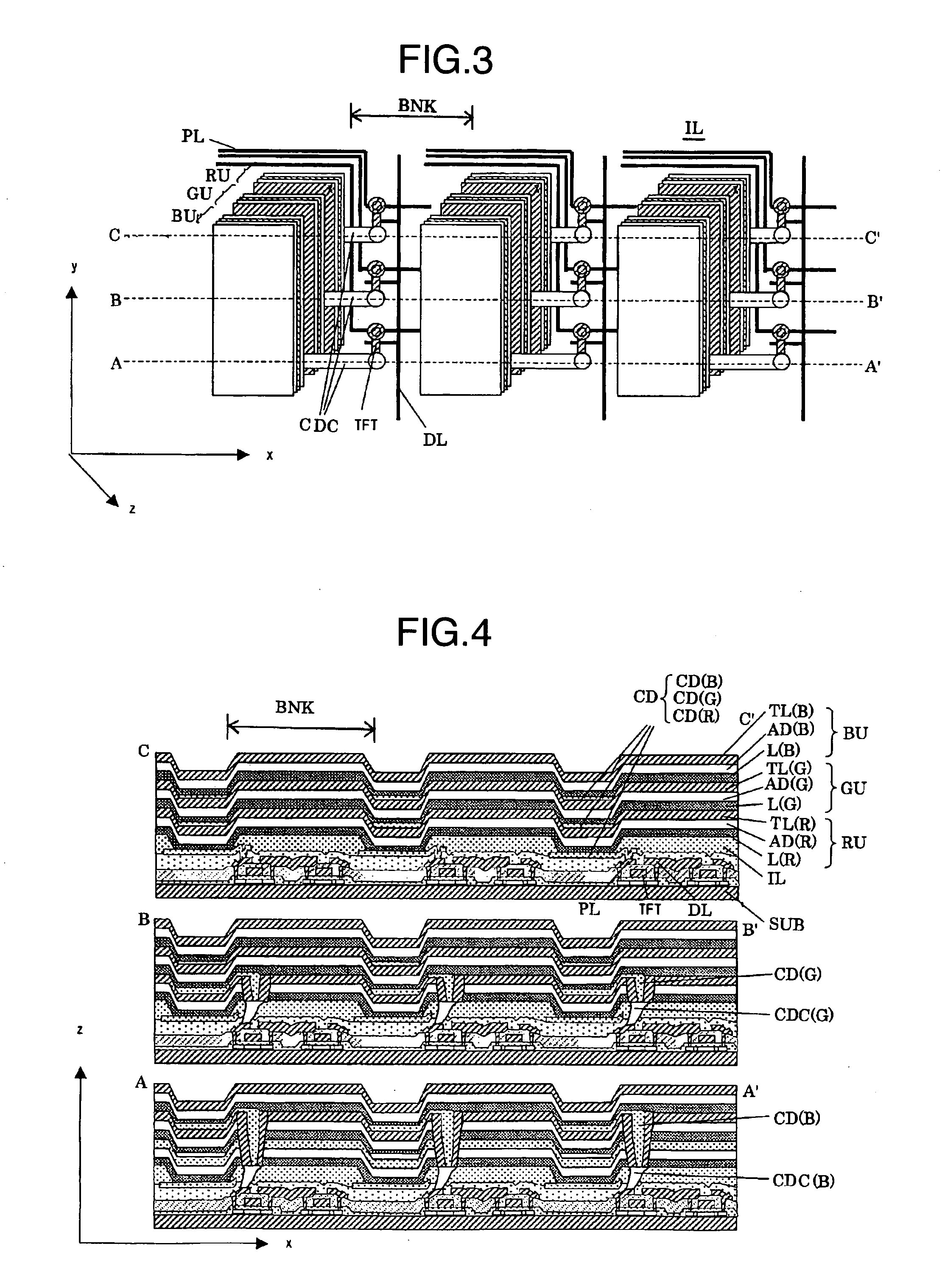Organic electroluminescence display apparatus
a technology of electroluminescence display and organic el, which is applied in the direction of instruments, discharge tubes luminescnet screens, static indicating devices, etc., can solve the problems of reducing the life-expectation of the organic el display apparatus, affecting the performance of the organic el element, and causing large parallax
- Summary
- Abstract
- Description
- Claims
- Application Information
AI Technical Summary
Benefits of technology
Problems solved by technology
Method used
Image
Examples
embodiment 1
[0059]FIG. 1 is a conceptual diagram for explaining a first embodiment of the present invention. Also, FIG. 2 illustrates cross-sectional views acquired by cutting off the first embodiment along an A-A′ line, a B-B′ line, and a C-C′ line in FIG. 1. The first embodiment is the so-called bottom-emission pixel display apparatus for emitting out display light from an insulating-substrate SUB side. Each of the primary colors, i.e., red (R), green (G), and blue (B), corresponds to a unit pixel (i.e., a subpixel). These three color unit pixels form one color main pixel. In FIG. 1, the insulating substrate (hereinafter, glass substrate) SUB illustrated in FIG. 2 exists in the back of the paper surface. An active pixel circuit where thin-film transistors are used as the active elements is fabricated into the main surface (i.e., inner surface) of this glass substrate SUB. An inter-layer insulating film IL is formed in the upper layer of this active pixel circuit.
[0060] On the inter-layer ins...
embodiment 2
[0073]FIG. 3 is a conceptual diagram for explaining a second embodiment of the present invention. Also, FIG. 4 illustrates cross-sectional views acquired by cutting off the second embodiment along an A-A′ line, a B-B′ line, and a C-C′ line in FIG. 3. The second embodiment is the so-called top-emission pixel display apparatus for emitting out display light from the opposite side to the insulating substrate SUB. In this organic EL display apparatus, the red (R) organic EL element RU, the green (G) organic EL element GU, and the blue (B) organic EL element BU are multi-layered in this order from the glass-substrate SUB side. Similarly to the first embodiment, the three unit pixels are located within the area of one unit pixel. This location makes it possible to accomplish implementation of the higher-definition performance as compared with the conventional location where the respective organic EL elements are located in the substrate-surface direction.
[0074] In FIG. 4, the red (R) org...
embodiment 3
[0079]FIG. 5 is a conceptual diagram for explaining a third embodiment of the present invention. Also, FIG. 6 illustrates cross-sectional views acquired by cutting off the third embodiment along an A-A′ line, a B-B′ line, and a C-C′ line in FIG. 5. The third embodiment is basically the same as the second embodiment except a point that the organic light-emitting layers L (R), L (G), and L (B) in the second embodiment are formed by evaporation using a mask. Namely, the organic light-emitting layers L (R), L (G), and L (B) configuring the red, green, and blue organic EL elements RU, GU, and BU with the three-layer structure are evaporated using the mask in only the aperture portion of the pixel (i.e., between the banks BNKs). The other configurations are the same as those in the second embodiment.
[0080] In the configuration of the third embodiment, basically the same materials are used as those in the second embodiment. Moreover, the configuration is embodied in basically the same fil...
PUM
 Login to View More
Login to View More Abstract
Description
Claims
Application Information
 Login to View More
Login to View More - R&D
- Intellectual Property
- Life Sciences
- Materials
- Tech Scout
- Unparalleled Data Quality
- Higher Quality Content
- 60% Fewer Hallucinations
Browse by: Latest US Patents, China's latest patents, Technical Efficacy Thesaurus, Application Domain, Technology Topic, Popular Technical Reports.
© 2025 PatSnap. All rights reserved.Legal|Privacy policy|Modern Slavery Act Transparency Statement|Sitemap|About US| Contact US: help@patsnap.com



